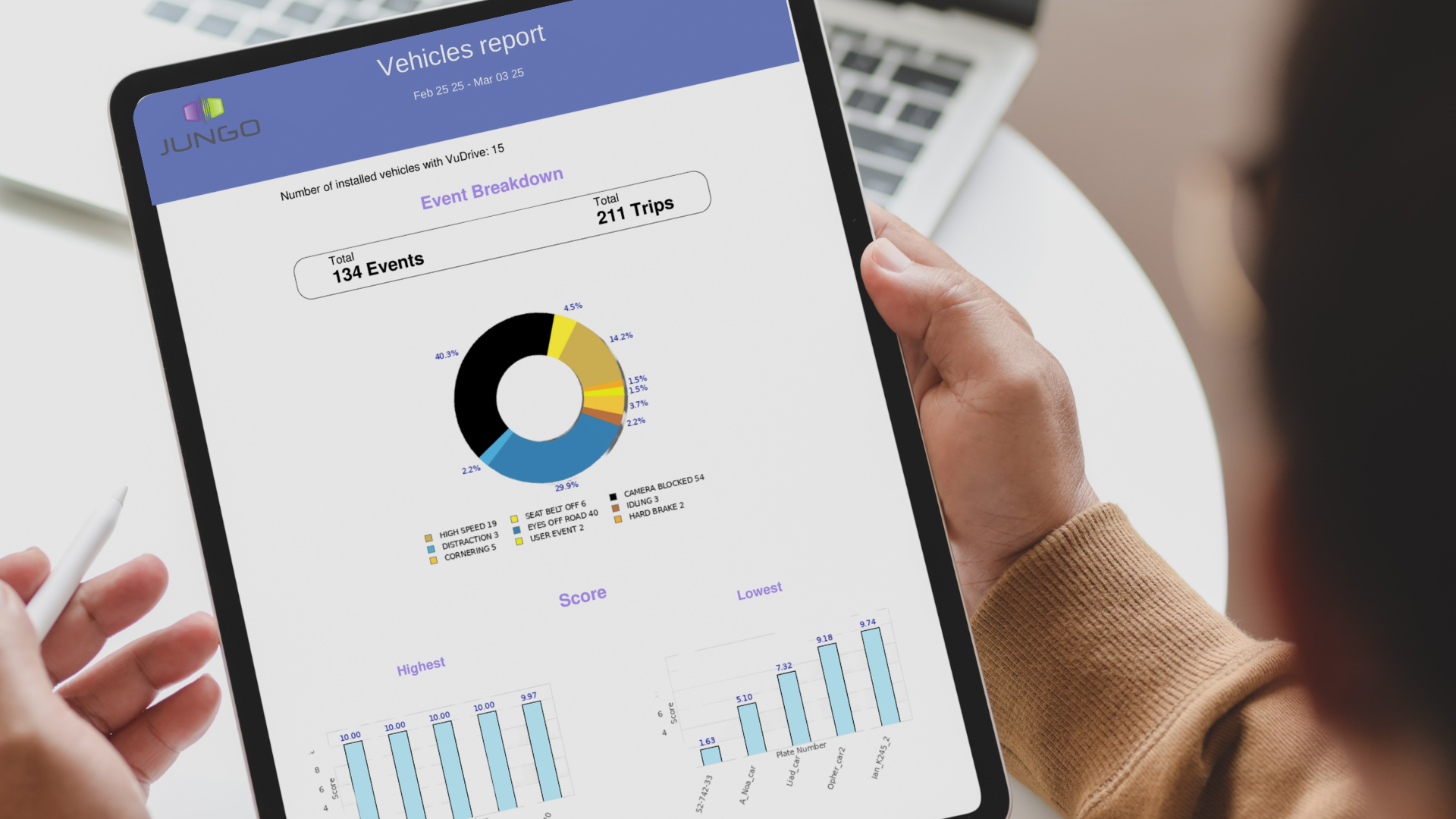From Reactive to Proactive: Predictive Analytics in Fleet Safety
In the past, fleet safety programs often operated reactively: waiting for accidents, violations, or harsh driving events to occur, and then addressing them after the fact. While this model provided an opportunity to correct behavior, it also left room for preventable incidents, injuries, and financial losses. Today, with the rise of predictive analytics, fleet managers are empowered to shift their safety approach from reactive to proactive.
This shift isn’t just a trend; it’s a critical evolution in how fleets manage risk. Predictive analytics uses data from vehicles, drivers, and environments to anticipate risky behaviors or potential accidents before they occur. When applied effectively, it allows fleets to identify patterns, implement targeted interventions, and ultimately prevent accidents—saving lives, time, and costs.

Understanding Predictive Analytics in Fleet Safety
Predictive analytics refers to the use of statistical algorithms, AI models, and historical data to forecast future outcomes. In the context of fleet safety, this means analyzing data from onboard cameras, telematics systems, GPS tracking, driver behavior logs, and environmental conditions to assess the likelihood of future safety incidents.
Key inputs include:
- Driving behavior (e.g., speeding, harsh braking, acceleration patterns)
- Real-time road and weather conditions
- Traffic flow and congestion levels
- Driver fatigue indicators
- Incident history and event frequency
The result? Actionable insights that allow fleet managers to act before an incident occurs.
From Data to Decisions: How VuDrive Supports Predictive Safety
VuDrive, an all-in-one video telematics and fleet management solution, is designed to support predictive safety by continuously collecting and analyzing critical fleet data. Its AI-powered dashcams detect driver behavior in real time, identifying risks such as distraction, drowsiness, mobile phone use, or lack of seatbelt compliance.
Instead of just recording these events, VuDrive analyzes them to uncover behavioral trends. For example:
- A driver who shows increasing signs of drowsiness across multiple trips
- A vehicle frequently triggered for harsh braking in a specific area
- Consistent seatbelt violations during specific time windows or routes
These patterns can signal emerging risk. With this knowledge, managers can initiate targeted coaching, adjust routes, or revise schedules before an incident occurs.
Predictive analytics is about turning real-time events into foresight—giving fleets the power to prevent, not just react.

Why This Shift Matters More Than Ever
Fleet operators today face increasing pressure to reduce accidents, control insurance costs, and maintain high levels of operational efficiency. Relying solely on traditional safety methods is no longer sufficient in an environment where:
- Insurance premiums are rising year over year
- Driver shortages make retention and safety more important than ever
- Distracted driving incidents are at an all-time high
- Claims fraud and legal scrutiny are growing
Predictive analytics not only improves safety but also delivers measurable business outcomes:
- Fewer accidents: Early detection and intervention help prevent incidents.
- Lower insurance costs: Safer fleets result in fewer claims and better rates.
- Improved driver performance: Coaching becomes data-driven and targeted.
- Optimized operations: Patterns reveal inefficiencies in routes, schedules, or vehicle usage.
Turning Insight into Action
To go from predictive insight to safety action, a few steps are key:
- Centralize Data Collection: Platforms like VuDrive collect and sync video, telematics, and behavioral data in one place, creating a comprehensive safety profile for each driver and vehicle.
- Score and Prioritize Risks: Use driver scoring tools to rank and categorize risk levels. Focus on drivers or routes that show higher risk scores or emerging trends.
- Automate Alerts and Reports: Set up real-time alerts and weekly safety reports to flag patterns as they develop. For example, a report showing a 30% increase in distracted driving during night shifts can prompt immediate policy review.
- Coach and Communicate: Turn data into dialogue. Use video footage and event reports to coach drivers with context and clarity. Coaching is most effective when it’s personalized and consistent.
- Track Progress: Over time, compare pre- and post-intervention metrics to evaluate what’s working. VuDrive makes this easy with customizable dashboards and historical reports.

The Role of AI in Predictive Safety
AI is at the heart of today’s predictive analytics. Unlike traditional telematics that rely on fixed rules (e.g., a hard brake = risk), AI systems learn from patterns across thousands of driving hours.
This enables systems like VuDrive to:
- Identify complex behaviors (like signs of drowsiness or glancing at a phone)
- Adjust risk models based on driver, vehicle type, time of day, and more
- Improve accuracy and reduce false positives over time
This adaptability makes AI a powerful partner in building a future-proof safety strategy. As more data flows in, the system becomes more accurate and insightful—helping fleets not only prevent crashes, but also predict and prevent the causes of crashes.
The move from reactive to proactive fleet safety isn’t just a smart upgrade—it’s becoming a necessity. Predictive analytics enables smarter decisions, stronger coaching, and safer roads. By identifying risks before they become incidents, fleets can protect their drivers, reduce costs, and build a long-term safety culture.
VuDrive helps make that transition seamless, with built-in tools to monitor, analyze, and act. It’s more than just an AI dashcam—it’s your fleet’s co-pilot in safety.

